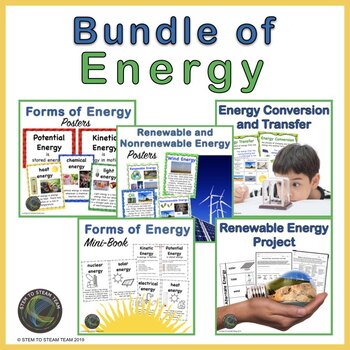Energy Bundle
- Zip
Products in this Bundle (5)
Description
This 4th grade science resource includes our top selling Energy Posters resource, Energy Mini Booklet resource, Renewable / Nonrenewable Energy Posters resource, Energy Conversion Activity resource, and our Alternate Energy Project. Each set is aligned to the Next Generation Science Standards.
Related Resources
⭐ Renewable and Nonrenewable Energy Reading Passages for NGSS
⭐ Renewable and Nonrenewable Energy Reading Passages for NGSS - Black and White
⭐ Forces and Motion: Start Your Engines!
⭐ Forces and Motion Mini Booklet
⭐ Forces and Motion Posters for elementary grades
Customer Tips:
How to get TpT credit to use towards future purchases:
*Please go to your My Purchases page (you need to login). Next to each purchase you’ll see a Provide Feedback button. Click that and you will be taken to a page where you can give a rating and leave a short comment about the product. Each time you give feedback, TpT gives you credit that you can use towards your future purchases.





